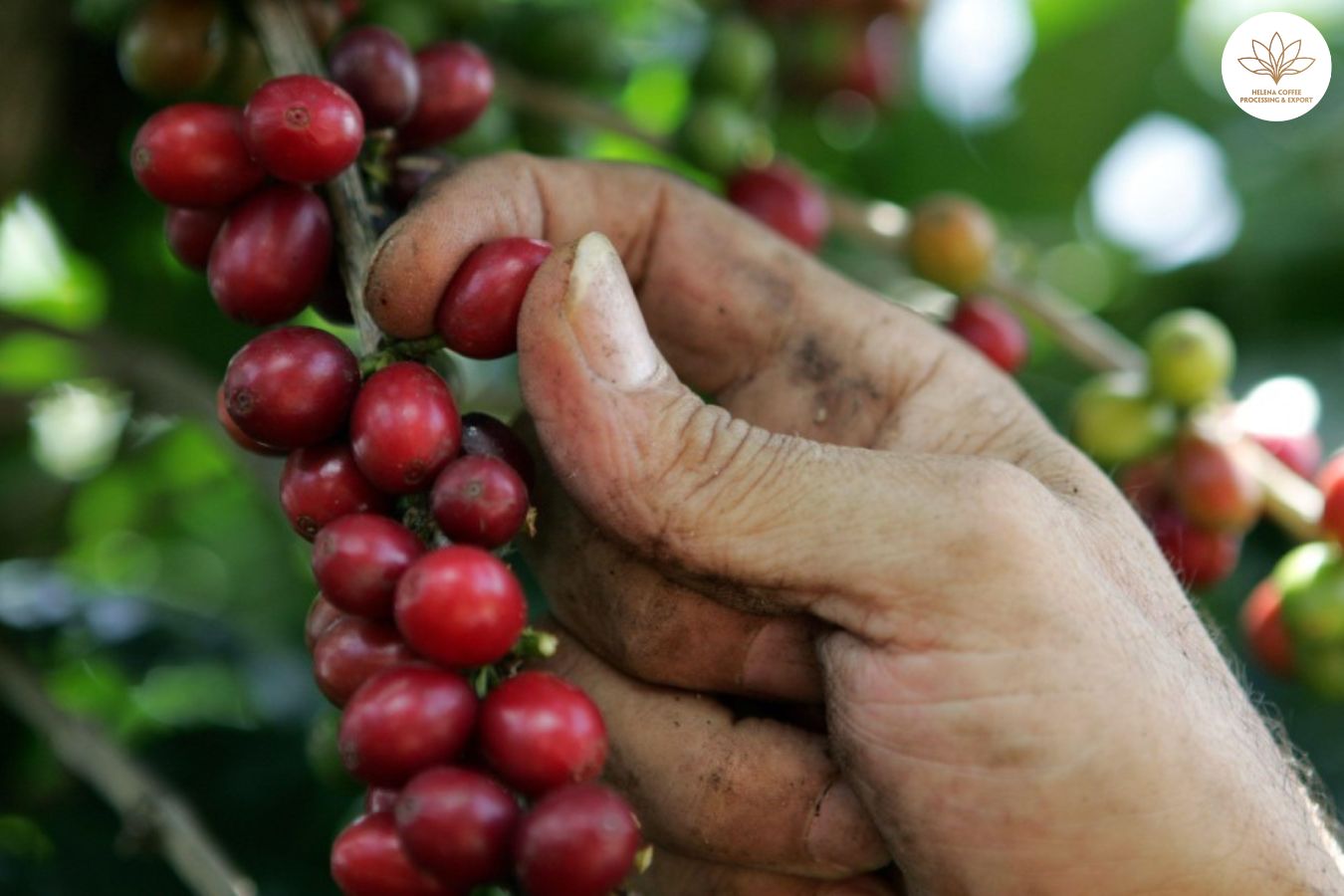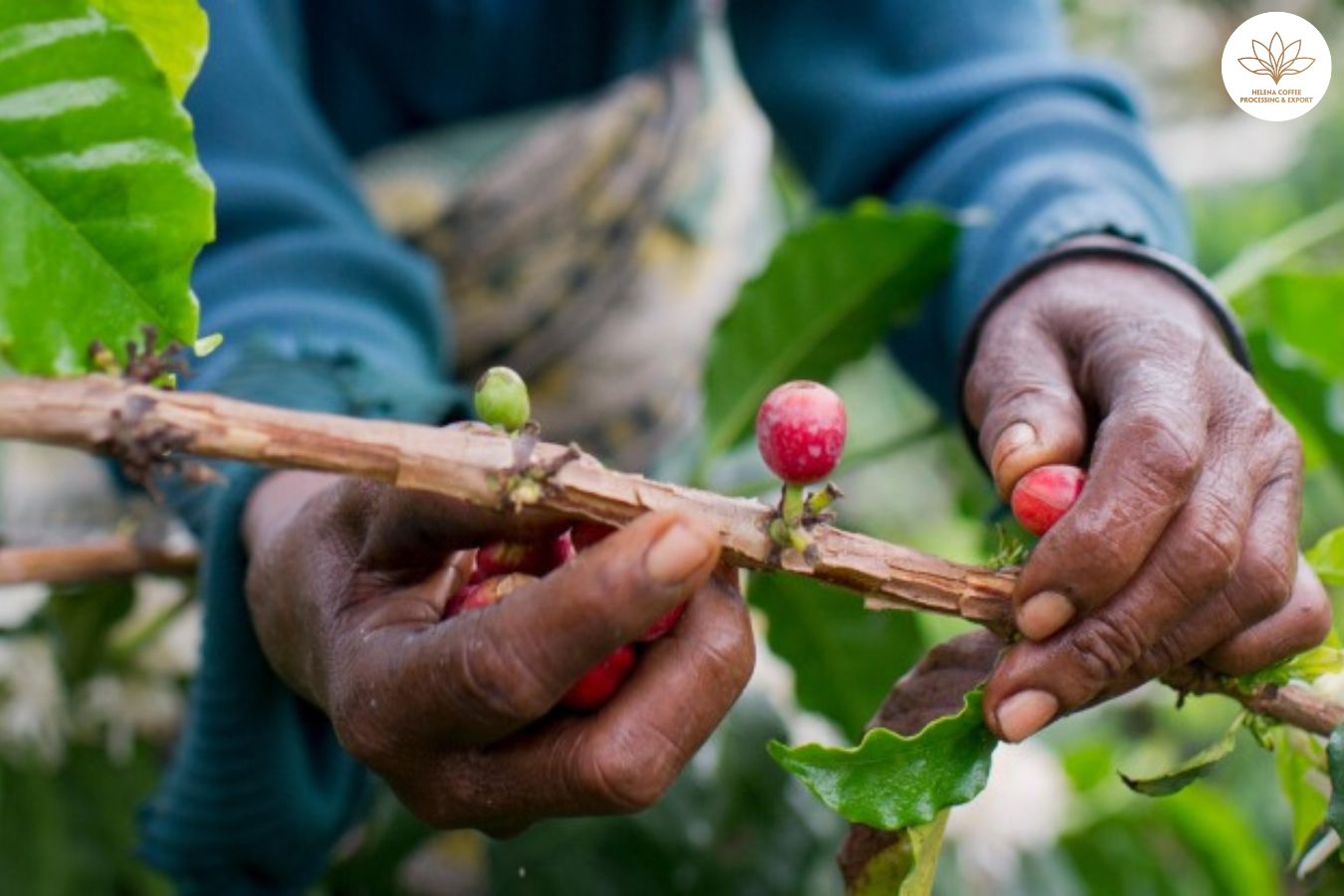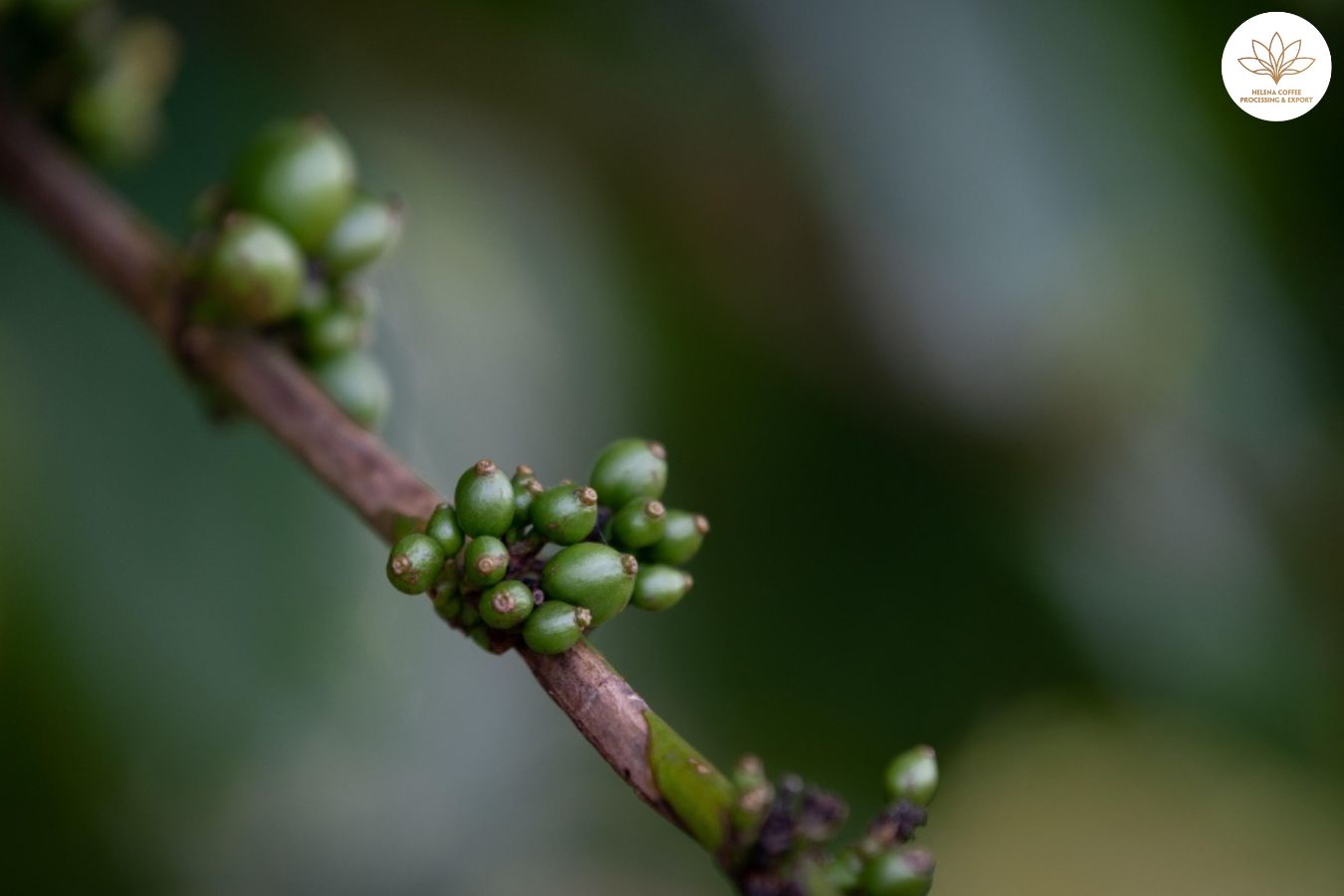
Cuscatleco Coffee: Curiously, Cuzcatleco is the name with which, before the Spanish conquest, the Central American indigenous people identified the inhabitants of the ancient lordship of Cuzcatlán, a territory currently located in El Salvador. Even today, it is common to call Salvadorans Cuzcatlecos.
Over time, this country became the sixth largest producer in the region with nearly 600,000 60 kg bags grown and processed annually. Thus, in 2007 the Cuscatleco varietal appeared (this time with s), developed by the Salvadoran Foundation for Coffee Research (Procafé). Since then, it has increasingly gained popularity among coffee growers due to its high productivity and resistance to rust.
To learn more about this variety that originates in El Salvador, I spoke with Francis López, taster at the Cuzcachapa cooperative, one of the largest processing centers in the country, and part of the Fraga Coffee quality team , and with Rafael Castillo , agronomist and cupper dedicated to research on coffee quality. Continue reading and find out what they told me.
What is the origin of the Cuscatleco variety?
The Cuscatleco variety comes from a series of genetic research carried out by the Procafé Foundation and is born from a selection of the Timor T5296 hybrid.
“Both the creation of the hybrid of the Timor varieties with Villa Sarchi, which gave rise to T5296, and the Cuscatleco selection process, are traditional genetic improvement procedures. They are based on crossings of the same species or with other species, which in the scientific lexicon are known as intraspecific and interspecific, respectively,” says Rafael.

Usually, these selections allow technical groups to evaluate the performance of new varieties under field conditions or commercial conditions. Thus, in El Salvador, Procafé was in charge of making the selection and calling it Cuscatleco.
Francis comments that Procafé “decided to release the Cuscatleco variety in February 2007. It can be grown in areas with altitudes from 600 to 1200 m above sea level, especially in areas where it becomes difficult to increase production with other varieties.”
He adds that Cuscatleco comes from the Sarchimor T-5296 Hybrid, originated from the artificial crossing of the Villa Sarchi 971/10 variety (natural mutation of the Bourbon variety), with the Timor hybrid CIFC 832/2.
In Central America , the Bourbon, Pacas, Caturra, Villa Sarchi, Pacamara and Catuai varieties are the most cultivated and accepted by coffee growers; However, they have become more susceptible to various pests such as rust, which damage the coffee tree and affect its productivity.
“Due to its ancestral heritage, the Cuscatleco variety has greater natural genetic variability than more commercial varieties and is more resistant to rust. For this reason, it is recognized as a kind varietal with great hope for coffee growing in El Salvador,” says Francis.
Plant characteristics and profile
The main distinctive feature of the Cuscatleco varietal is its powerful resistance to rust, a disease that attacks the foliage of the plant. Its treatment brings expenses to coffee growers added to losses in production levels.
Apart from that, Cuscatleco is characterized by being a plant with a compact conical structure, with a medium size (approximately 2.4 meters) and long branches of up to 80 cm, large leaves and dense foliage. Its fruits are usually large and resistant to falling due to heavy rains.
Francis mentions that this variety has “an abundant and deep root system (roots) with tolerance to phytoparasitic nematodes. In addition, it has a very good adaptation at low and medium heights; However, it is slightly susceptible to diseases such as cercospora ( Cercospora coffeicola ) and Rooster’s Eye ( Mycena citricolor ).”

The first harvest is usually given in the third year from planting. Between 5,000 and 6,000 plants can coexist in one hectare, using the pruning of a single vertical stem. Due to its high productivity, Cuscatleco has high nutritional requirements, which is why it requires several fertilizations per year.
Rafael clarifies that although Cuscatleco has a high resistance to diseases, “that resistance, in Catimores and Sarchimores, has been questioned in recent years because some isolated producers have reported finding rust and other diseases in these varieties. “I consider it important to study this phenomenon since it could help to better understand the genetic factors that intervene in the infection processes in coffee.”
Is Cuscatleco an exclusive varietal from El Salvador?
Both interviewees agree that this varietal originated in El Salvador and is where its cultivation is most widespread. Although, due to its fame for its resistance to rust, it is also produced in neighboring countries such as Guatemala and Honduras.
“Its resistance to pests, its high productivity and its compact structure make Cuscatleco a very attractive varietal for producers seeking to maintain a large volume of production on low or medium altitude lands,” says Francis.
Rafael points out that due to these characteristics “it is very likely that producers from other Central American nations have obtained seeds from Cuscatleco, disseminating the varietal in several countries.”
What can be assured, says Francis, is that due to the volume of cultivation “in El Salvador, Cuscatleco is marketed as a unique variety. In other countries it could be used in mixtures for large batches of commercial coffee, without giving greater importance to its traceability.”
The challenges in the cultivation of Cuscatleco
The cultivation of Cuscatleco has several challenges, the first at an agronomic level. “Varieties like Sarchimores can produce large volumes of coffee but require investment to achieve this. We can teach producers to see it as an opportunity where they can take advantage of their productive potential,” says Rafael.
Another of its challenges, he adds, is the vulnerability of adaptation zones. In El Salvador, for example, the areas where varieties such as Cuscatleco are grown have been decreasing over the years due to the increase in urban sprawl, the reduction of productive areas and business opportunities in other areas that have changed land use.
Francis mentions that due to its high nutritional demand, “the biggest challenge for producers is to provide this variety with adequate technical assistance to get the most out of it.”
At a commercial level there are also barriers to overcome. “Unfortunately, some people within the value chain have spoken poorly of the sensory profile of Cuscatleco and other disease-resistant varieties, which has made them less popular. Despite this, many producers, through good processing processes, have obtained excellent sensory results that have been transmitted in better valuation and higher income,” he highlights.
What is your mug profile?
Francis and Rafael have had the opportunity to taste Cuscatlecos from different farms and regions of El Salvador. Both agree that it is a coffee with medium or low acidity and good body.
Francis describes it as “a balanced cup, medium acidity and medium sweetness, round body and short aftertaste. The only detail is that it has a grassy note that is not very pleasant. It can be described as straw or astringent green herbs, leaving a slightly dry feeling. In terms of the Specialty Coffee Association‘s cupping protocols , the variety is around 77 to 82 points approximately.”
He clarifies that there are cases in which a process can provide certain characteristics and reduce that grassy note and improve your score. “Either with a honey or natural process, for example, or with aerobic and anaerobic fermentations that can result in a totally different cup, with more fruity profiles that are around 84 and 85 points.”
Rafael, for his part, points out that it is a coffee of low complexity but pleasant. “It is characterized by having sweet, caramel flavors and distinctive herbal notes. The acidity tends to be low or medium and has good body. Its characteristics depend on the production area and the type of beneficiary. In some cases we can find fruity flavors and I have even had the opportunity to try very well produced and processed Cuscatlecos that have great drink quality.”
What makes Cuscatleco different and what is its potential?
The biggest difference compared to other varieties comes from its genetic origin. “It is not a natural mutation but a selection work that has allowed Cuscatleco to have characteristics of climatic adaptation, good agricultural performance and good processing and market potential,” Rafael points out.
Francis comments that it is a variety with a lot of potential but focused on a certain segment of producers and market. Cuscatleco is recommended for altitudes up to 1300 m asl and for high-volume coffee markets.
“Very few specialty coffee producers use this variety on farms located at higher altitudes because they focus on other varieties with a higher cup quality profile, such as Pacamara, Pacas, Bourbon, Geisha and SL-28.”
In summary, this variety stands out for its production potential, resistance to pests and diseases and because it offers good commercial results thanks to its yield. In addition, it is attractive to Central American coffee growers, especially in El Salvador, because with a correct fermentation process it can develop complex and high-quality cups.
FAQS:
- Sarchimor Coffee varieties – Origin & Biological Characteristics
- Where Is Arabica Coffee From, Origin and Geography of Arabica Coffee
- What Is Natural Green Coffee Flavor? Is It Good For Weight Loss Support?